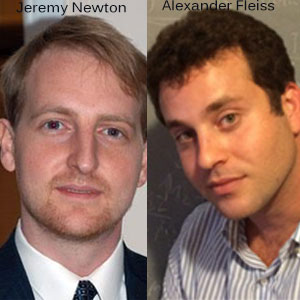THANK YOU FOR SUBSCRIBING

Regulating AI - The Genie Is Out of the Bottle
Ian Oppermann, Government Chief Data Scientist, Department of Customer Service, NSW


Ian Oppermann, Government Chief Data Scientist, Department of Customer Service, NSW
Large language models (LMs) and generative AI have redrawn the frontier of what we thought artificial intelligence (AI)could do. Ask any current generation of AI tools to whip up a short biography of your favourite artist, and you will get a succinct summary. Ask it to write a song in the style of this same artist, and you will get something impressive. .
What has changed is the way AI works and the size of the datasets used to train the AI. Generative AI is trained to ‘focus’ and is training on datasets of unimaginable sizes to mere mortals, literally trillions of examples. .
This unsupervised training occasionally leads to some surprises. When presented with a supposedly factual response from your AI query,some results may refer to ‘real world’ sources that simply do not exist. Similarly, a request to generate an image from a verbal description may lead to something a little more ‘Salvador Dali’like than you may have expected. This scaled up version of an age-old adage of ‘garbage-in-garbage-out’leads to the modern twist ‘garbage-in-sometimes-hallucination-out.’ .
Nonetheless, the responses from the latest generation AI tools, are pretty impressive, even if they need to be fact checked. .
So, what does this mean for people thinking of regulating AI or putting AI policies in place? .
AI Is Different To Other Technologies: Some of the concerns raised about AI could just as readily be applied to other technologies when first introduced. When addressing concerns with the use of AI, if you replaced ‘AI’ with ‘quantum’, ‘laser’, ‘computer’ or even ‘calculator’, some of the same concerns arise about appropriate use, safeguards, fairness, and contestability. What is different about AI is that it allows systems, processes and decisions to happen much faster and on a much grander scale. AI is an accelerant and an amplifier. In many cases, it also ‘adapts’, meaning what we design at the beginning is not how it operates over time. .
Before developing new rules, existing regulation and policy should be tested to see if it stands up to potential harms and concerns associated with those three ‘a’s’. If your AI also generates or synthesises, then a few more stress-testsare needed as this generationgoes well beyond what you can expect from your desktop calculator. .
AI Is No Longer Explainable: Except in the most trivial cases, the depth and complexity of the neural networks (number of layers and number of weights), coupled with the incomprehensibly large training datasets means we have little chance of describing how an output was derived even if it were possible to unpick all of the levels and the impact of each training element. Any explanation would be largely meaningless. .
For any decision which matters, there must always be an empowered, capable, responsible human in the loop ultimately making that decision. That “human-in-the-loop” cannot just be a rubber stamp extension of the AI driven process. .
Any Regulation Must Not Refer to the Technology: There have been numerous calls to ban, pause, or regulate use of AI. The first LLMs hit the scene in November 2022, emerging into our lives with a bang, and with the accelerator planted to the floor. Every day seems to announce new frontiers in AI capability. Buckle up when quantum supercharges AI. .
The orders of magnitude difference between the pace that technology moves, and that regulation adapts, means the closer the regulation gets to the technology, the soonerit is out of date. Regulation must stay principles based, and outcomes focussed. Regulation must remain focussed on preventing harms, the requirement for appropriate human-based judgement (even if AI assisted), dealing with contestability, and remediation. .
Blanket Bans Will Not Work:. Various departments of education around the world (including Australia) have announced comprehensive banning of student use of generative AI. The intention of these bans is to prevent students unfairly using the AI to generate responses to assignments or exams,then claiming it to be their own work. .
Regulation must provide the oversight to allow us to stay vigilant to any negative consequences from AI use individually, for our society, and for the environment.
Such bans are extremely unlikely to be effective simply because those who are not banned from usehave a potential advantage (real or perceived) by accessing powerful tools or networks. The popularity of AI platforms also means that workarounds are likely to actively explored including use of platforms in environments outside of the restrictions. The bans arguable address symptoms rather than root causes. In the case of education, rethinking how learning is assessed is core to the challenge of appropriate use of generative AI. .
We Need To Think Long Term: .AI is technology which has been with us for a long time. It is suddenly renewed, and we are looking at it with little understanding of the long-termconsequences. By analogy, electricity was the wonder of the 19thcentury.From an initial scientific curiosity, electricity is embedded everywhere and has profoundlychanged the world. .
AI is likely to have as profound animpact as electricity. As AI becomes embedded in devices, tools and systems, it becomes invisible to us. Our expectations of these devices, tools and systems are that they are smarter: better aligned to the tasks at hand; better able to interpret what we mean rather than what we ask for; and improve over time. We do not expect to be manipulated by, or harmed by the tools we use. .
Regulation must provide the oversight to allow us to stay vigilant to any negative consequences from AI use individually, for our society,and for the environment. .
There is no chance we can put the AI genie back in the bottle. .
Our focus must be on ensuring a safe and level playing field for users of AIas it continues to amplify, accelerate and adapt. That focus also has to stand the test of time.
Weekly Brief
I agree We use cookies on this website to enhance your user experience. By clicking any link on this page you are giving your consent for us to set cookies. More info
Read Also













